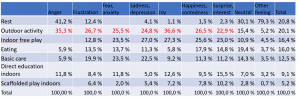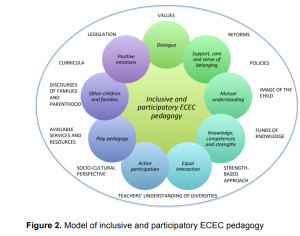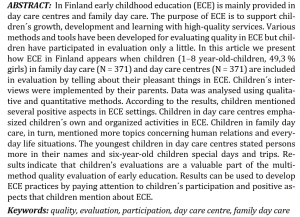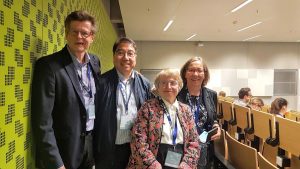 Teemu Nikkola et al. have written an article about creativity in education ‘Children’s creative thinking abilities and social orientations in Finnish early childhood education and care’. The journal is Early Child Development and Care. The data is from Progressive Feedback. The perspective of creativity is important both from the personal and environmental points of view. Creativity includes all kinds of everyday activities in kindergarten – not just arts or planned creativity. The personal aspects of creativity highlight the importance of valuing children’s creative efforts, even though the act may have been created by others previously. The environmental aspects of creativity highlight the importance of children participating in the creation of both the curriculum content and educational conduct. The article is open access and can be downloaded from the link at the end of the post.
Teemu Nikkola et al. have written an article about creativity in education ‘Children’s creative thinking abilities and social orientations in Finnish early childhood education and care’. The journal is Early Child Development and Care. The data is from Progressive Feedback. The perspective of creativity is important both from the personal and environmental points of view. Creativity includes all kinds of everyday activities in kindergarten – not just arts or planned creativity. The personal aspects of creativity highlight the importance of valuing children’s creative efforts, even though the act may have been created by others previously. The environmental aspects of creativity highlight the importance of children participating in the creation of both the curriculum content and educational conduct. The article is open access and can be downloaded from the link at the end of the post.
In the table, we can see how child interviews and separately conducted creativity test (Torrance) are related. In participative orientation, children concern the situation and intend to change it. The strategy highlights contact with others’ and children’s agency. In participation, children learn to build the future while at the same time considering others. The sooner the children can practice their creative abilities, the better they are ready to take part in the creation of their lives and also the lives of others. Teemu is strongly weaving creativity into the everyday experiences of children and the creation of early education. Click the link below!
Nikkola, T., Reunamo, J. & Ruokonen, I. (2020). Children’s creative thinking abilities and social orientations in Finnish early childhood education and care. Early Child Development and Care. https://doi.org/10.1080/03004430.2020.1813122






